How to help a shy child in school
Supporting Shy Students: 10 Ways Elementary Teachers Can Help
As a teacher, working with shy students can sometimes present a challenge. You want to support every child in the classroom, but you know you have to walk a fine line when attempting to draw them out and encouraging class participation. One shy student’s gentle encouragement to come out of the shell may end up being another shy student’s worst nightmare!
So how do you support shy students in a manner that builds their confidence and helps them join the classroom fun? We talked to the experts to get some tips to help you help the shy students in your classroom!
Expand students’ emotional language with a printable poster for your classroom!
Why Are Some Students Shy?
When it comes to dealing with shy students, understanding the root of the issue is a good way to start. Scientists who’ve studied shyness estimate that as much as 30 percent of those who we’d describe as shy are the way they are for one simple reason: genetics! Other students may show signs of shyness because they’re in a new and unfamiliar environment — often common in younger children who are new to school or students who are new to the district.
Finding out why a student is shy comes down to doing a little digging into their history says Dr. Nikki Lacherza-Drew, PsyD, a licensed psychologist from Allendale, NJ.
“Talk to past teachers and parents!” she advises. “Shyness typically doesn’t just come out of nowhere, and most parents and teachers will take notice in preschool or kindergarten.”
Occasionally there is a more serious cause for concern, and if something feels off about your student’s shyness, it’s best to reach out to your student’s parents and your school guidance department as soon as possible.
Post these Calming Strategies prominently to help students handle anxiety and other feelings that can become overwhelming.
“It is important to have the student appropriately observed and even tested to rule out the possibility of a learning disorder or other neurodevelopmental disorder,” Lacherza-Drew says. “Be proactive instead of reactive and try to get to know the students — not just have them as a number in the classroom. ”
”
Don’t feel that your student’s shyness rises to that level of concern? We asked the experts to share some other helpful tips for teachers to support shy students.
Download a free worry waterfall to help students move through troubling thoughts.
Encourage and Support Shy Students in Your Class
Remember They’re Not Doing This on Purpose
Shy students may come off as insubordinate, Lacherza-Drew warns, and treating a shy child as you might one who is being naughty can only exacerbate the symptoms.
“Too much anxiety doesn’t allow our brains to appropriately process or recall information,” she notes.
In fact, shy students who are afraid to ask questions can easily fall behind, and if they’re frequently anxious about having to participate in class, they may start engaging in school refusal, Lacherza-Drew says. This goes back to getting at the root cause of the behavior and meeting students where they are at.
Start with Non-Verbal Communication
Plenty of elementary students love to talk. How many times have you had to say “save it for after class”? But for shy students who don’t tend to speak up, you’ll want to start with non-verbal ways that they can communicate with you so that you can begin to build that all-important teacher-student relationship.
How many times have you had to say “save it for after class”? But for shy students who don’t tend to speak up, you’ll want to start with non-verbal ways that they can communicate with you so that you can begin to build that all-important teacher-student relationship.
- Allow students to put a sticky note or another silent indicator on their desk to let you know when they need help.
- Encourage the entire class to take part in non-verbal responses to questions such as holding up cards with answers or doing something else with their body (e.g. any student who thinks the answer is A should put their head down)
Let Them Move at Their Own Pace
“Adults have good intentions, but oftentimes they have their own set of expectations from how they were raised or how they parent,” says Audrey Grunst, licensed clinical social worker and CEO of Simply Bee Counseling. “It is not fair to place those personal expectations on a student.” Instead, she suggests taking cues from your student and following their lead as to how quickly they can move along the path in developing social skills.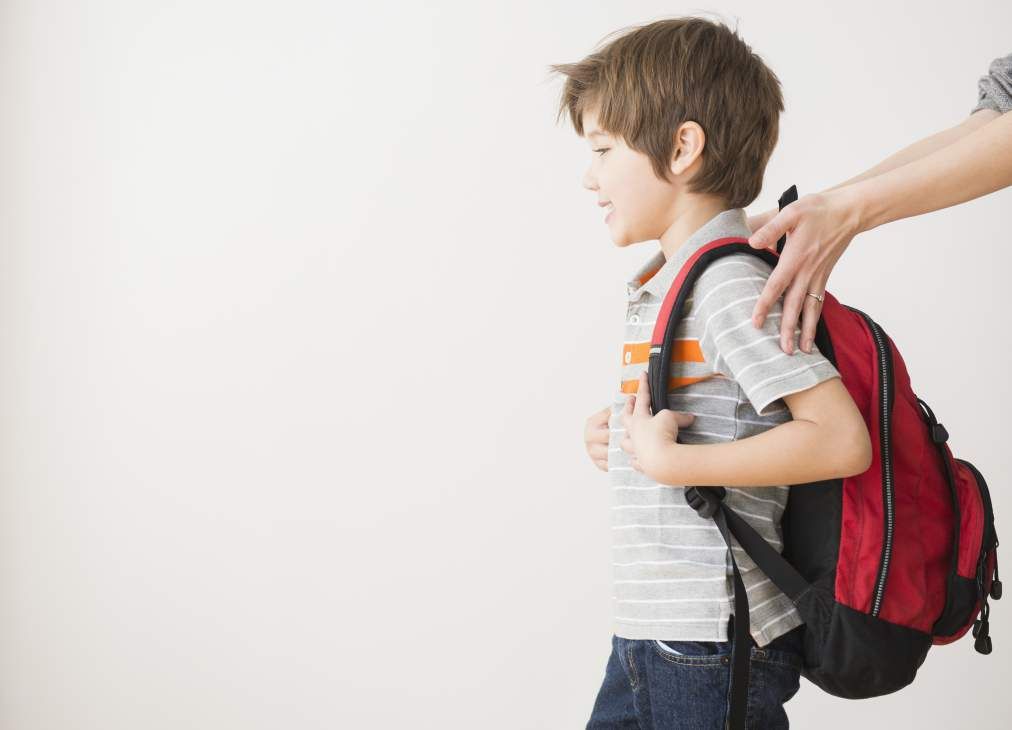
Use Positive Reinforcement
“Punishment is not effective in changing behavior,” Lacherza-Drew reminds teachers. On the other hand, positive reinforcement can go a long way in helping shy kids slowly modify their behavior.
“At the beginning, the smallest change in behavior for a shy student, such as using that sticky note or going up to the teacher to ask a question … REWARD IT!” Lacherza-Drew advises. “Show the student that you are noticing what they are doing, you appreciate the effort and want them to continue the behavior.”
Rewards can be as simple as a few stickers or a special badge.
Choose from dozens of positive reinforcement resources for elementary school.
Learn Their Triggers
Are there specific things that cause your shy students to retreat and become more introverted? You can talk to the student, their parents, the guidance department, or past teachers to find out what their triggers are, Lacherza-Drew says. Next? Talk to the student and work together to problem-solve.
Next? Talk to the student and work together to problem-solve.
“You might be surprised by what they come up with!” she says.
Avoid Labeling Them
“Comments like ‘why are you so shy’ or ‘don’t be shy’ are not helpful,” Lacherza-Drew warns. “The student has most likely heard them from others and this may only further embarrass them.”
Create Safe Spaces With Friends
Does your shy student have a pal they’re comfortable with? Assigning the two children to work together or setting their assigned seats next to one another can help your shy student feel more comfortable.
Give Them a Job
When handing out jobs in the classroom, opt to make assignments instead of (or in addition to!) letting children volunteer. This way a shy student gets a job too, and you can pick something that is in their wheelhouse.
“Are they responsible? See if they will run teacher errands outside of the class,” Lacherza-Drew says. “This pulls on their strength but also encourages socialization.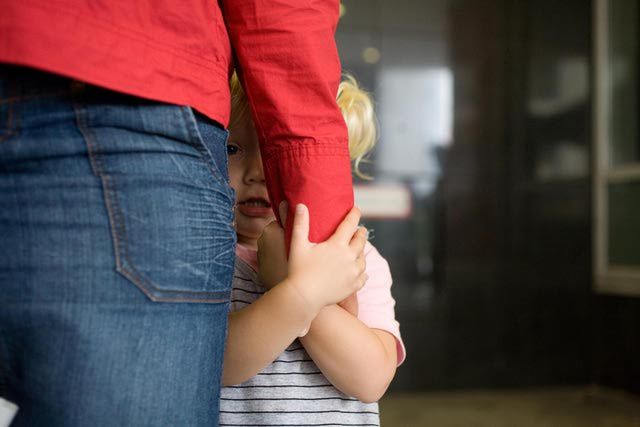 ”
”
Explore teachers’ favorite classroom jobs resources.
Don’t Force It
If they can’t stand up in front of the class or read aloud, don’t make them. Just as all kids learn differently, all kids interact differently!
Be Mindful of How Their Shyness Affects Their Learning
In general, shyness itself will not affect a student’s learning, Grunst says, but “if a student’s shyness is causing them to be worried or preoccupied for the majority of the day, or if it is causing school-refusal related issues, then it is a sign that a student’s shyness is impeding on their education.”
What are your best tips for helping shy students in your classroom?
Need social and emotional learning resources? See teacher-created resources for morning meeting, community circle, and more!
Banner image via shutterstock/Thanumporn Thongkongkaew
Shy kid? Here's how to help them succeed in school.
Shy kids may not experience school in the same way as their more outspoken peers. But just because your child is shy doesn't mean that they can't fully participate in school. Use these strategies to help your shy child find personalized ways to share their thoughts and gain confidence.
But just because your child is shy doesn't mean that they can't fully participate in school. Use these strategies to help your shy child find personalized ways to share their thoughts and gain confidence.
Some children find school a thrilling experience: They wave their hands in the air to answer questions, belt out songs during group sings, and are the first to sit down for snack.
Other children are less thrilled. Shy or more reserved kids can find school overwhelming. They may hesitate to speak out in class, hold back from the group, or prefer to keep to themselves, playing quietly in a corner.
How to help a shy child participate in school
Realize that shyness isn't a fixed trait. Just because your child is shy right now, this doesn't mean they'll always be that way or that they'll be shy in every situation. There's also nothing inherently bad about being shy, so don't feel like you have to change your child's behavior. Instead, find ways to help them be successful in school, even when they're feeling shy.
Talk to the teacher. Stay in touch with teachers and school staff. Parent-teacher communication is an important tool for helping shy kids in school.
Start by comparing notes on how your child acts at school and at home. What activities do they love at home that aren't part of the classroom? What does your child dislike that they're expected to do at school? Gather information with your child's teachers, and look for ways to help make the classroom an engaging and comfortable place. Meet with the teacher and work out a plan.
Bring their interests to school. For example, if your child is fascinated by bugs, ask their teacher if they can bring their collection in to share with the class. Your child may balk at making a formal presentation, but there could be an opportunity for them to talk or answer questions. The teacher could hold a bug discussion using your child's materials as the visual aids, or create a bug station based on your child's supplies.
Even if your child doesn't speak up right away, just having their favorite things in class can help melt their shyness. They can participate and feel a sense of belonging, which is a start. Even sharing a book or toy your child loves can help.
Visit their school. Having you visit their classroom can help your shy child feel more comfortable at school. Your schedule may not allow regular or lengthy classroom visits, but even touching base now and then gives you a chance to observe. You might be able to come in to read a book, help at lunch, or chaperone a field trip.
Make sure they're challenged. If your child is reluctant to participate in classroom activities, it may be because they're too easy. If you suspect this is an issue, work with the teacher on ways to give your child more challenge. Alternatively, your child may be holding back because the activities in class are too challenging. Talk to your child's teacher to find ways to appropriately challenge your child. Depending on their age, consider involving your child in these discussions as well.
Depending on their age, consider involving your child in these discussions as well.
Advertisement | page continues below
Help them at home. Sometimes kids act shy at school because they're anxious about not getting things right. Some children have an easier time grasping new skills in a quiet place, without the stimulation and pressures of the classroom. If your child is awkward painting with a brush, giving a presentation, or writing a story, practice together at home. Give your child chances to improve, but try not to add pressure. The idea is to build your child's confidence.
Focus on their accomplishments. Don't just pay attention to the stumbling blocks. Celebrate your child's wins in and out of the classroom. Playing a sport, learning an instrument, participating in community service projects, and even being a good helper around the house can help build your child's confidence at school.
Be their "student." You can help your young child role-play "school" at home as a nonthreatening way to practice being in the classroom. Set up a classroom with stuffed animals, and let your child act it out. You can help organize the game and participate as one of the "students," but let your child steer the flow of the classroom. You may discover school fears, such as mean kids or a grumpy teacher. If, as their "student," you can play lightly at being scared of the kids or the teacher, your child may find this very funny. Their laughter may help release some of their scared feelings so they can be more confident. Talk about what's going on, ask your child questions, and use the information for talks with their teacher.
Set up a classroom with stuffed animals, and let your child act it out. You can help organize the game and participate as one of the "students," but let your child steer the flow of the classroom. You may discover school fears, such as mean kids or a grumpy teacher. If, as their "student," you can play lightly at being scared of the kids or the teacher, your child may find this very funny. Their laughter may help release some of their scared feelings so they can be more confident. Talk about what's going on, ask your child questions, and use the information for talks with their teacher.
For older kids, ask them to teach you or a younger sibling something they've learned at school. Pay attention to how they're communicating as they teach. Start a discussion about how teaching and learning happens in their classroom and what feels good and not-so-good about it. If any issues come up, strategize with your child about how to improve them.
How can I encourage my shy child to speak up?
Just because your child is shy doesn't mean they can't fully participate in school. Instead of asking your child to be more outspoken, encourage them to share their brilliance in a way that feels good to them. Discuss how important it is for people to learn from each other and how they have a unique perspective to bring to school. Discuss different ways to participate in class: talking with a partner, using writing or drawing, discussing with a small group, or sharing with the whole class.
Instead of asking your child to be more outspoken, encourage them to share their brilliance in a way that feels good to them. Discuss how important it is for people to learn from each other and how they have a unique perspective to bring to school. Discuss different ways to participate in class: talking with a partner, using writing or drawing, discussing with a small group, or sharing with the whole class.
Your child doesn't need to be a gung-ho, first-in-line student to learn. But easing their fears even a little can make school a more enjoyable experience, which promotes learning and is a worthy goal. By following the tips above, you can help your child feel more confident at school.
You want your child to be enthusiastic about school – but try not to worry too much, especially if your child's still in preschool. During the preschool years, kids are just beginning to learn how to interact with peers and participate in group activities. Many preschool-age children still feel most comfortable doing parallel play alongside other kids, observing and imitating rather than playing directly with friends.
In kindergarten most children play interactively, but they're still adjusting to the social environment of school. In both preschool and kindergarten, children are testing new ground and learning new rules of behavior. It's a process that can take time.
As shy kids get older, they may find it more comfortable to play with one friend or a small group of peers. Encourage your child to reflect on the social situations in which they feel more or less comfortable. Discussing and normalizing feeling shy can go a long way.
Just as personalities differ, kids vary tremendously in how they relate to school. Some children take longer than others to adjust to a daily classroom routine or to a new school, teacher, or class. Some are shy at first but eventually open up. Others stay shy – and there's nothing wrong with that. Normal shyness isn't a problem that needs fixing.
How can I tell if my shy kid needs help?
Most shyness or quietness isn't a serious problem, but in some cases shyness can be debilitating, causing kids to withdraw and avoid social situations.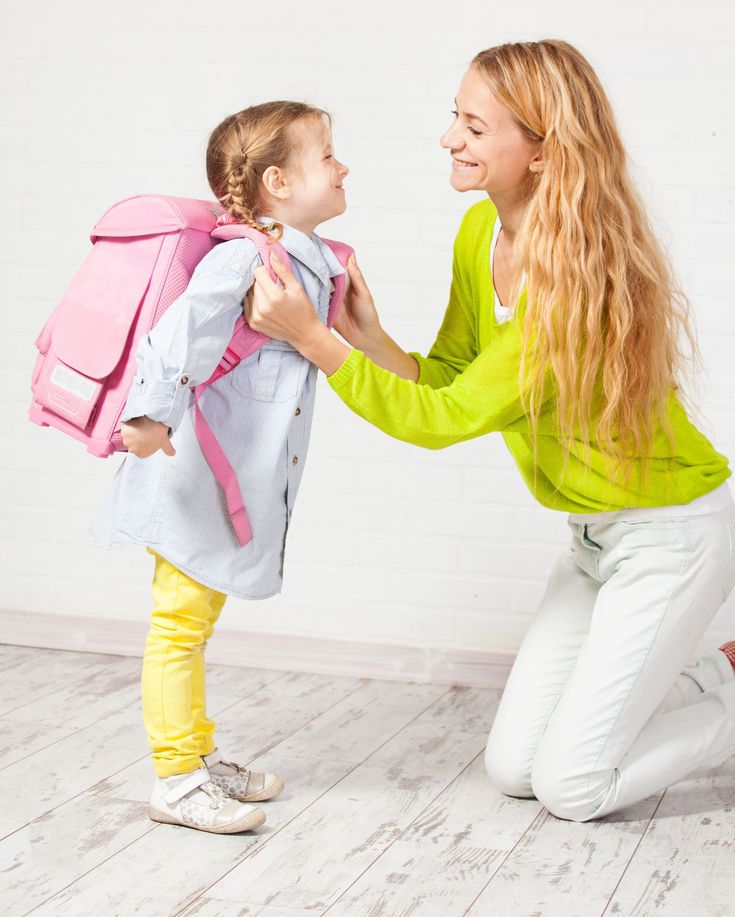 In these cases, problems with socializing can continue into adulthood. Shyness can also be a sign of an anxiety disorder in kids.
In these cases, problems with socializing can continue into adulthood. Shyness can also be a sign of an anxiety disorder in kids.
A few red flags may indicate that your child needs professional attention. Talk to your child's pediatrician or the school psychologist if your child:
- cries or throws tantrums on a regular basis before or at school
- is significantly withdrawn most of the time, making little eye contact
- acts violently in school, hitting other kids or teachers
Also, if your child's shyness interferes with daily life and friendships, ask your child's doctor for a referral to a therapist.
Helping a schoolchild to cope with shyness
Together with Daria Kuznetsova, conflict psychologist at the Home School "InternetUrok", we find out how to help a schoolchild to cope with shyness. How to act correctly so as not to spoil the relationship, but to help.
Daria Kuznetsova
Practicing psychologist-conflictologist.
She has 12 years of experience working with children with various psychophysiological developmental characteristics.
Excessive childhood shyness worries parents and is one of the most common reasons for seeking a psychologist. According to statistics, among adolescents from 12 to 14 years old, about 50% of boys and more than 60% of girls suffer from it.
Statistical data published in the framework of the scientific work "The sociometric status of a teenager in a peer group and its relationship with shyness."
Well, if the problems are limited to a temporary inability to talk to a boy you like or invite a pretty girl to the cinema. Worse, if it creates problems when communicating in society, getting a quality education and, as a result, determining one's life path.
Corr.: How is child's shyness formed? Is it an innate quality or acquired?
Daria : In the root structure of shyness lies a person's inability to cope with realities. It arises: “I don’t take, I don’t go and I don’t do ... because I’m afraid of defeat.” This is a beautiful wording for masking fear. Explanations: “I'm not afraid, but I'm embarrassed”, “I just don't like being negatively evaluated” - hide the fear of evaluation from others. The result of the position “I want to do it, but I don’t do it” is frustration, depression, and a bad mood. Because such a child does not stop wanting to do an act.
It arises: “I don’t take, I don’t go and I don’t do ... because I’m afraid of defeat.” This is a beautiful wording for masking fear. Explanations: “I'm not afraid, but I'm embarrassed”, “I just don't like being negatively evaluated” - hide the fear of evaluation from others. The result of the position “I want to do it, but I don’t do it” is frustration, depression, and a bad mood. Because such a child does not stop wanting to do an act.
Shyness is formed by three factors:
- Temperament . This quality is innate and genetically determined. At the same time, completely different children grow up in the same parents in the same conditions. One will put up with what he does not like, the other will rebel. Punchy parents may well have a shy child and vice versa. It is impossible to foresee or calculate anything here. Qualities are passed from grandmothers, great-grandmothers, great-grandfathers and other ancestors.
- Education .
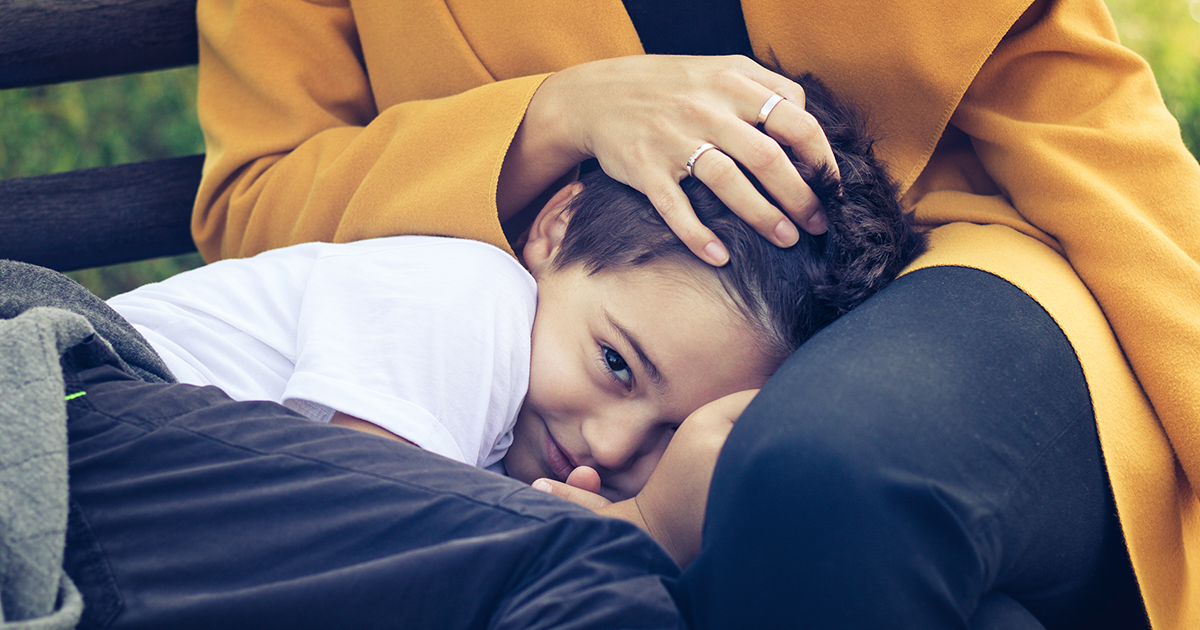 If the character is explosive, then it usually breaks fear. Anger takes over, and a person out of anger begins to do something. But in shy people, the internal reaction - to break through - is absent. The child is simply afraid and remains in place. This may suit parents and be encouraged by them. In addition, one of the elders in the family may demonstrate this behavior as normal. For example, mother in relation to father or grandmother.
If the character is explosive, then it usually breaks fear. Anger takes over, and a person out of anger begins to do something. But in shy people, the internal reaction - to break through - is absent. The child is simply afraid and remains in place. This may suit parents and be encouraged by them. In addition, one of the elders in the family may demonstrate this behavior as normal. For example, mother in relation to father or grandmother. - Wednesday . These are parents, grandparents, siblings, friends, school environment. The environment reinforces the chosen format of behavior. For example, such a child may be convenient for the teacher. It does not create disturbances and problems. True, the teacher cannot count on him, because if you call such a student to the blackboard, he will not be able to answer, although he knows the material. By playing along with the student, the teacher forces him to respond less verbally, giving grades for written work. Such a child will be ashamed to ask if he does not understand something.
 There are gaps. This creates a sense of powerlessness.
There are gaps. This creates a sense of powerlessness.
Corr.: Is there a situation when, on the one hand, a person has a strong character, but on the other hand, he is still shy?
Daria : Maybe so. Perseverance is a trait of a strong person. She is no stranger to the shy. But we often confuse shyness and modesty, and these are different states even in sensations. Humility is worth learning. Including in order to achieve success in life ... This is what we develop ourselves, demonstrating as the result of a good upbringing. "I can afford to be modest."
Shyness is a negative trait that hinders life and development . It forces us not to do, not to say anything. If the child did not explain what worries him, did not ask about what he did not understand, but kept silent - swallowed it, and this became the norm, then he will not open up and will not achieve what he is capable of in life. A pronounced feature of shyness is the inability to manifest itself brightly. Everything related to public speaking, loud expressions, impulsiveness and emotional reaction lies in this area ... Shyness will definitely prevent those who want to become a public person to achieve success and conduct appropriate activities ...
A pronounced feature of shyness is the inability to manifest itself brightly. Everything related to public speaking, loud expressions, impulsiveness and emotional reaction lies in this area ... Shyness will definitely prevent those who want to become a public person to achieve success and conduct appropriate activities ...
Corr.: Is there any form of activity where shyness can help?
Daria : Of course. There are many professions where at least it will not become an obstacle. For writing or scientific activities, it can even be convenient, because at first it will help you get involved in the subject of study and get carried away. Moreover, later it can go away on its own. After all, deep knowledge is one of the factors that give rise to confidence in a shy person. Its carrier can simply outgrow the problem and later remember it with a smile.
By the way: the most popular writer of her era, Agatha Christie, admitted that she suffered from "humiliating, terrible, inevitable shyness.
" Once because of this, she was unable to get to a party held at the Savoy Hotel, in honor of the success of the play based on her work. Dressed in her best dress, the 67-year-old writer was not recognized by the doorman and was not allowed into the hall. Instead of exclaiming: “Yes, you know who I am!”, She dutifully walked away and, sitting alone in the hall, watched the merry guests. However, it is unlikely that her detective stories would have gained such fame if the author had not developed the ability to observe ...
Daria : Shyness is the fear of someone else's opinion. When a person is alone, he is guaranteed to be spared from such an opinion. Due to the small workload of extraneous contacts, he has more time to study. If a person is stubborn or enthusiastic, then shyness can even contribute to its development.
Minus in accompanying internal experiences: he wants something, but he does not take the necessary steps to achieve what he wants. In childhood, this is not perceived as a problem. Mom feeds, and dad goes to work. It seems that everything is fine. And if the student did not cope and could not attend the circle, then this in itself is not scary. But in adulthood, it is fraught with consequences. A person cannot afford to have what he wants, therefore he is shy. At the same time, he will not fight, bite, and he will have fewer problems. Shyness will leave him at home and save him from negative events. Such a person is more likely to live a very calm, conflict-free life, but will she be happy?
In childhood, this is not perceived as a problem. Mom feeds, and dad goes to work. It seems that everything is fine. And if the student did not cope and could not attend the circle, then this in itself is not scary. But in adulthood, it is fraught with consequences. A person cannot afford to have what he wants, therefore he is shy. At the same time, he will not fight, bite, and he will have fewer problems. Shyness will leave him at home and save him from negative events. Such a person is more likely to live a very calm, conflict-free life, but will she be happy?
Subscribe to our newsletter
By clicking on the button, you consent to the processing of your personal data.
You have successfully subscribed to our newsletter
You will soon receive a subscription confirmation email
How to deal with shyness? Daria Kuznetsova's recommendations
First of all, , you need to figure out how shyness is good or bad for the child himself. Does it need to be fought? In certain environments, shyness can be a defense mechanism. For example, if there is a psychologically unpleasant situation at home. Mom is very demanding and wants too much from her son. She always drags somewhere: "Go, tell a poem to your grandmother." And “I am shy” in this case is translated as “I will not”, which, in turn, may vary. It can be the fear of going on stage, where you sweat all over and forget everything you wanted to say. But it is possible that the child will successfully cope with the situation if the environment becomes favorable or if he realizes the need for a given action ... The main thing is that such a reaction does not become a habit and does not turn into a complex or a way to do nothing. Run away from solving the problem.
Does it need to be fought? In certain environments, shyness can be a defense mechanism. For example, if there is a psychologically unpleasant situation at home. Mom is very demanding and wants too much from her son. She always drags somewhere: "Go, tell a poem to your grandmother." And “I am shy” in this case is translated as “I will not”, which, in turn, may vary. It can be the fear of going on stage, where you sweat all over and forget everything you wanted to say. But it is possible that the child will successfully cope with the situation if the environment becomes favorable or if he realizes the need for a given action ... The main thing is that such a reaction does not become a habit and does not turn into a complex or a way to do nothing. Run away from solving the problem.
To prevent this from happening, you need to pay attention to the child - unobtrusively observe how and in what company he communicates. Give him the opportunity to express himself in different teams and different environments.
One of the most authoritative ideologists of the 20th century, Mahatma Gandhi was known as a very shy person since childhood. Despite deep knowledge of jurisprudence and a flexible mind, for a long time he was not able to effectively support his clients as a lawyer. His public performances were weak, his words tangled up, and he couldn't control his excitement. Exhausted by failures, Gandhi went to work in South Africa, where many of his compatriots, having found themselves in a difficult situation, began to turn to him for advice and help. It was there that he acquired communication skills and found his calling as a fighter for the rights of the oppressed.
Secondly , remember that shyness is the other side of fear. A good way to deal with fear is responsibility. We take responsibility for anything: for a performance, for holding an event, for an event. This is the development of the will. If a shy child is gradually empowered: “You and I can definitely do it.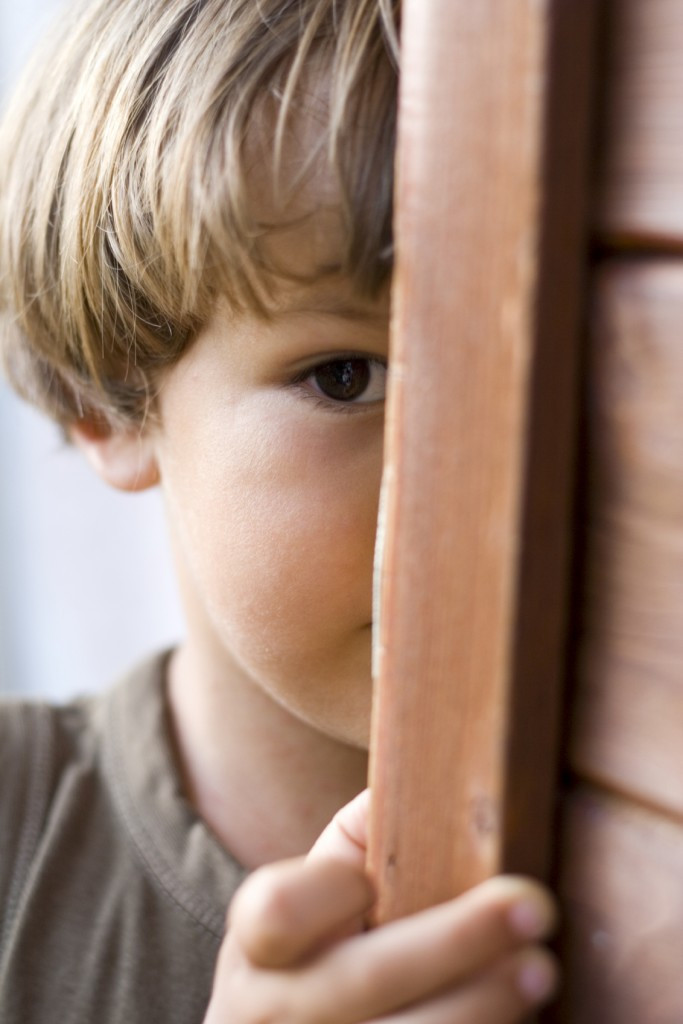 And I can’t do it without you,” then with the development of the area of responsibility, the area of shyness will decrease. Awareness of responsibility for something or someone displaces thoughts about yourself and your fears.
And I can’t do it without you,” then with the development of the area of responsibility, the area of shyness will decrease. Awareness of responsibility for something or someone displaces thoughts about yourself and your fears.
US President Roosevelt's wife Eleanor overcame her shyness by making empathy and responsibility for others her responsibility. She supported women and blacks in her country when they were completely powerless, and thus inscribed her name in the history of this country.
Third, , watch shy children. They are characterized by indecision, a quiet voice, doubts about everything and unwillingness to be highlighted. Accordingly, invite them to learn to speak simply first. Speak louder and more clearly each time. Talk as much as possible. That is, to act incrementally. And do not forget that every word they say is the result of a decision. When there are many words, there is no time for doubts.
Novelist Stephen King, nicknamed "The King of Horror", who has sold over 350 million books, advised in an interview: "You need to act quickly, writing down the plot as soon as it comes to mind.
Only in this way is it possible to maintain the initial enthusiasm and escape from self-doubt. According to psychologists, the more a shy person thinks about problems, the more his anxiety and indecision grow.
And it is important to learn how to express negative emotions. Because a shy child still expresses positive emotions. And the negative is shy. At the same time, if shyness turns into restraint with age, this is a plus. A diplomat must be reserved, but cannot be shy. He has an internal well-established mechanism for restraining and displaying his emotions ...
The fourth way to deal with shyness, I would call enthusiasm. Let the student get carried away with something seriously. The bottom line is that in today's world, a shy child needs to be given a place and a voice. In a literal sense, it could be a platform on YouTube. After all, he is shy, because he believes that he is inappropriate here and has no right to speak. It can also be an opportunity to express himself and open up in what he is truly interested in. Someone will splash themselves out in an exciting article. The other will eventually be able to generate unique ideas or become an inventor. In any case, a person ceases to be ashamed of his own thoughts and begins to express them.
Someone will splash themselves out in an exciting article. The other will eventually be able to generate unique ideas or become an inventor. In any case, a person ceases to be ashamed of his own thoughts and begins to express them.
In fact, shyness disappears when a person is immersed in a truly interesting activity. The recognized genius Albert Einstein was a very shy boy in childhood, which is why he did not shine at school, to put it mildly. Only when he found himself in physics, he found friends and like-minded people. It is curious that in his scientific research there is no trace of timidity. It is he who owns the phrase: "He who never makes mistakes has never tried to do something new."
In general, a person who was shy in childhood has a chance of becoming completely unshy in adulthood. Such qualities swing like muscles. Many skills are achieved by training and gradually increasing the quantity and quality of the ability to contact the world.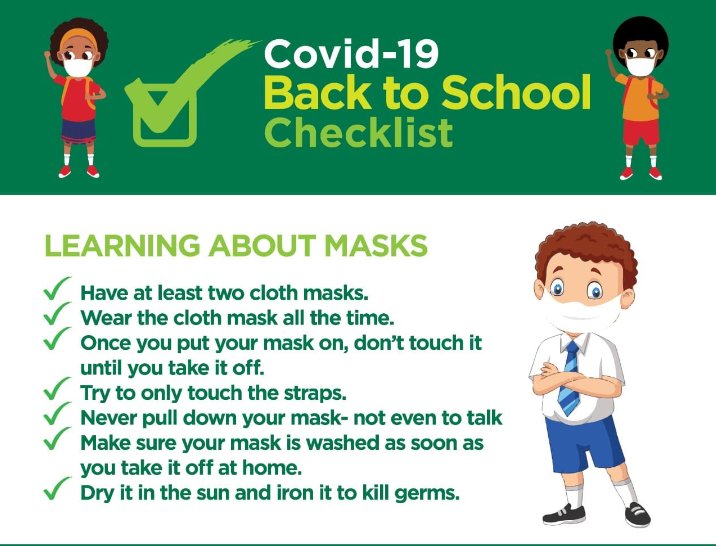 Start with active communication on the phone, continue on social networks, chatting with strangers, on forums. Then you can go outside and try to talk to a person you see for the first time. It must be remembered that shyness often goes away if a person finds himself in a difficult situation. Even just getting into an unfamiliar area, he is forced to discard it in order to find a way. Answers at the blackboard in the classroom, holding self-initiated conferences can be a good training. Acting courses and courses leading various programs work well.
Start with active communication on the phone, continue on social networks, chatting with strangers, on forums. Then you can go outside and try to talk to a person you see for the first time. It must be remembered that shyness often goes away if a person finds himself in a difficult situation. Even just getting into an unfamiliar area, he is forced to discard it in order to find a way. Answers at the blackboard in the classroom, holding self-initiated conferences can be a good training. Acting courses and courses leading various programs work well.
Nobel laureate physicist Lev Landau, in order to learn not to pay attention to other people's opinions, went for a walk along Nevsky Prospekt with a balloon tied to his hat. Periodically, he turned to respectable strangers: “Can you answer my question? Why are you wearing a beard?
How to help a shy child study?
Daria : In order to rock a shy student, you need to create a trusting atmosphere in which he can open up.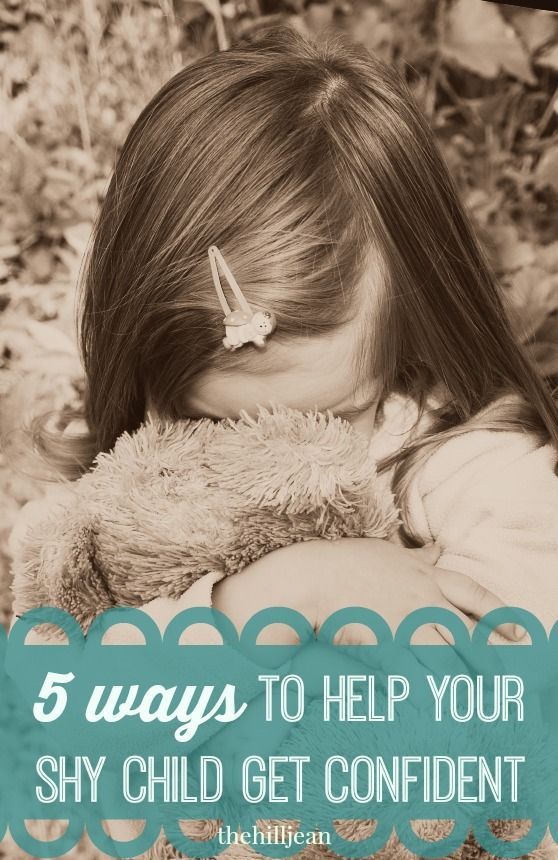 This can be difficult to do in a regular classroom with 30 children at the same time. Therefore, if shyness is painful and interferes with learning, it is worth considering transferring a student to a distance education format. This will allow him to gain quality knowledge and leave time to work on himself: to perform the above exercises that allow him to overcome shyness.
This can be difficult to do in a regular classroom with 30 children at the same time. Therefore, if shyness is painful and interferes with learning, it is worth considering transferring a student to a distance education format. This will allow him to gain quality knowledge and leave time to work on himself: to perform the above exercises that allow him to overcome shyness.
If, nevertheless, a decision is made to study in a regular school, then it is worth paying special attention to the appearance of the student. After all, a shy person always thinks that something is wrong with him. But if he is brilliantly dressed and looks 100%, then his life will become easier. Besides, it's good to find a way to work out extra. Qualitative knowledge in itself can be a good help to overcome shyness. After all, “if I know everything for sure, then I’m clearly less shy.”
Corr.: There are many trainings for shy people, where "specialists" undertake to remove their shyness in three or five days. How do you feel about this kind of experience?
How do you feel about this kind of experience?
Daria : I am still a supporter of a gradual increase in contact, and I am definitely against radical measures in relation to children. It is important to allow a shy child to get out of the wall. Because it’s rather strange to stand with a belt over a child and try to inspire openness to the world: “No, you will be an active, positive, cheerful and contact child. I said so!". After all, the world of such a child will become an even more unsafe place, which means that his shyness will remain the leading defense mechanism. In addition, experiences caused by drastic measures can result in psychological trauma.
But sometimes the extreme really works. When a shy person is in real danger, it forces them to overcome their shyness. However, this is rather an exception to the rule.
Therefore, it is better to carry out such a “fight” with shyness carefully. Love, mutual understanding, support are important for any child. I don't think shyness allows you to put restrictions on them.
I don't think shyness allows you to put restrictions on them.
How to overcome a child's shyness and insecurity
Shy children are similar to each other - they are indecisive, insecure, have difficulties in learning and communication. How often does it happen that, knowing the correct answer to a question, the child is perplexedly silent, and when he goes to the blackboard, he is covered with red spots and experiences panic fear. The situation escalates in the senior school age, when a teenager has to choose a profession and form a successful career. To prevent children's indecision from becoming a serious psychological problem, it is very important to know how to help a child overcome shyness.
Causes of shyness in children
Of paramount importance in overcoming child shyness is the determination of its root cause and provoking factors. Possible reasons include:
- difficult family relationships;
- fear of failure;
- psychological trauma;
- personal character traits;
- Borrowed behavior.

Only an experienced psychologist can determine the real cause of the problem. If your child experiences anxiety and difficulties in communication, difficulties in adapting to school and kindergarten, you can get professional psychological advice at the Rostum Academy educational center. Qualified specialists will help you build harmonious relationships in the family and tell you how to overcome the shyness and insecurity of the child .
How to save a child from shyness: advice for parents
The main task of parents who are faced with the problem of child shyness is to help the student become self-confident, raise his self-esteem and develop a positive self-perception. What can parents do in such a situation?
- Encourage communication and don't scold shyness. Praise the child in those situations when he was able to master himself in an unfamiliar environment or met a new friend. Encourage him to talk more. And never scold for fear.
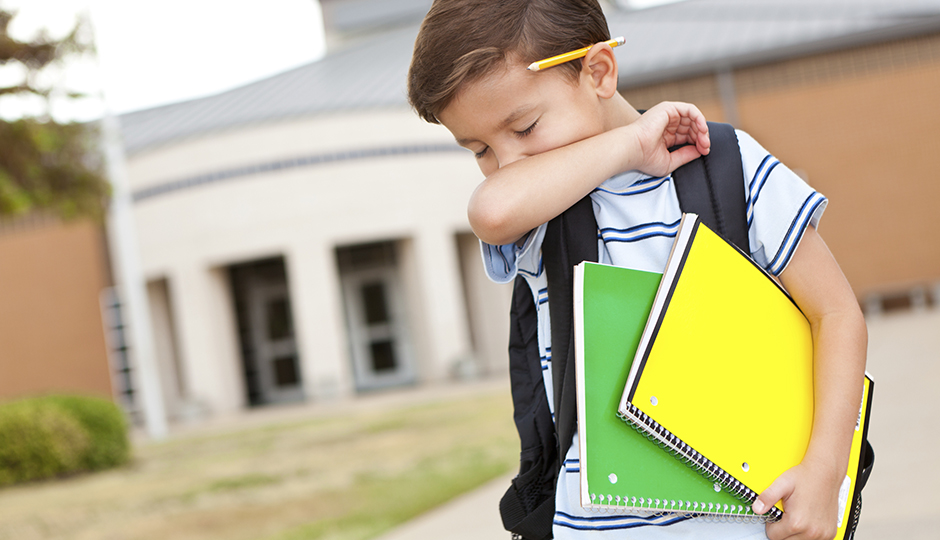
- Consciously create new situations. Invite guests to your home more often, encourage your child to participate in contests and competitions, enroll him in the sports section.
- Never single out shyness as a negative trait. On the contrary, in communicating with other people, try to emphasize the delicacy, restraint of your own child.
- Give the children a pet (such as a dog). Daily walks with a four-legged friend will expand the horizons of your children and contribute to new acquaintances.
These recommendations will be especially effective for children of primary school age. However, in the case of adolescent shyness, a different approach is required. At the age of 13–15, each person undergoes a reassessment of internal values. And it often happens that many teenagers negatively evaluate their own "I", considering themselves uninteresting and insignificant to others. In this situation, it is very important for parents to support the child and show the value of his opinion.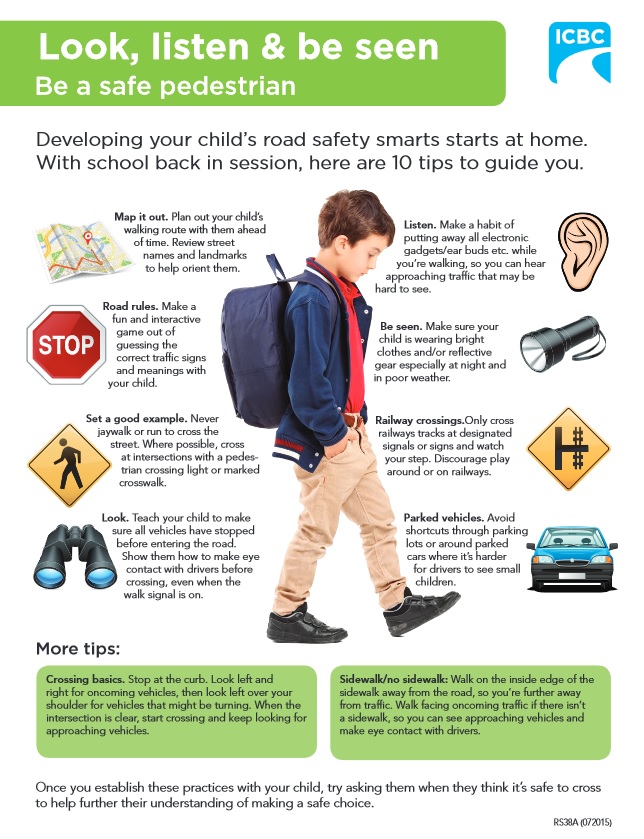
Games and exercises to overcome childhood shyness
There are many games and exercises that can help your child get rid of shyness.
- Exercise “If only I were bolder” — Take turns with your child to make arguments in favor of courage and self-confidence by simulating various situations. Depending on the simulated situations, the exercise can be used both for younger students and for teenagers.
- Game "Live illustration" (for children 5-12 years old) - the parent reads out a poem (story, fairy tale), inviting the child to illustrate the heard emotions with facial expressions and gestures. Agnia Barto's poems, filled with childhood experiences and subtle humor, are best suited for such a game.
- Exercise "Who has more arguments" (5-12 years old) - participants in the game choose a statement (for example, "reading is useful because ...") and take turns giving arguments for its correctness.













